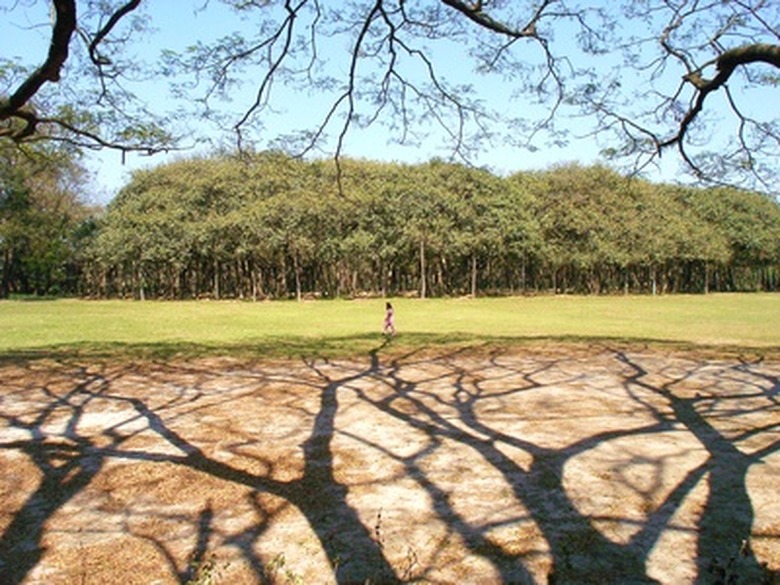Hawaiian Banyan Tree Facts
Banyan is the name given to several species of the genus Ficus. These large trees, which are native to the tropics and subtropics, were brought to the Hawaiian Islands in the late 1800s. Although they are not native plants, banyans have become an integral part of the Hawaiian landscape.
History
The first banyans were brought to Oahu, by early foreign residents during the sugar plantation era. A few were grown in early private botanical gardens, and a few others graced the landscapes of large estates.
Many old banyan trees in Hawai'i are locally famous, such as the group of trees that line both sides of Banyan Drive in Hilo, on the Big Island of Hawai'i. Each of these enormous trees bears a plaque with the name of the famous person who was invited to plant it during the 1920s through 1960s. Some of these banyans were planted by such notable figures as Mark Twain, Amelia Earhart and Richard Nixon.
- Banyan is the name given to several species of the genus Ficus.
- These large trees, which are native to the tropics and subtropics, were brought to the Hawaiian Islands in the late 1800s.
Types
Many varieties of Ficus exist called banyan, including several kinds known as "strangler figs." These types of banyans begin life high in the branches of other trees, and then grow roots down their trunks, eventually killing the host.
Another type of banyan is called a "root climber" because of it forms aerial roots along the length of its branches, which eventually become trunk like columns. This type of banyan is most commonly planted in the landscape. Common species in Hawai'i include the creeping fig (F. pumila) and the Moreton Bay fig (F. macrophylla).
Benefits
Banyans are related to the edible fig tree and they produce small-fig like fruits which are relished by birds. They rapidly grow into very large, tropical-looking shade trees, which are useful in parks and public open spaces. They are tolerant of poor soils, coastal conditions and even drought. They are handsome trees in the right location, and stately old banyan trees have become a much beloved part of the Hawaiian landscape.
- Many varieties of Ficus exist called banyan, including several kinds known as "strangler figs."
- Another type of banyan is called a "root climber" because of it forms aerial roots along the length of its branches, which eventually become trunk like columns.
Considerations
Banyans reach heights of 80 to 100 feet and a single tree can grow to be over an acre in width. Roots grow down from lateral branches, forming a maze of trunks, which expand outward for long distances. Some species have larger canopies than others, but they are all formidable trees, which do not belong in residential landscapes. Trees in public spaces require frequent maintenance to prevent undesired spreading of the trunk. Their large roots can also invade septic systems and destroy foundations and sidewalks. Banyans also produce large amounts of leaf litter and shade out other plants or grass growing below.
Warning
At first, banyan trees growing in Hawai'i had to be propagated by cuttings because each species requires a specific pollinator wasp to bear fruit, and none of these were present on the islands. During the early 1900s, in an ill-fated attempt to restore degraded watersheds to health, 35 species of these fast-growing non-native trees were planted in Hawai'i's forest reserves. Their corresponding pollinator wasps were also released in hopes that the trees would reseed. Only two species of these wasps survived, but their impact was significant because the Chinese banyan and the Port Jackson fig began to reproduce freely and invade native forests. Today both of these trees are considered alien weeds in Hawai'i and should never be planted.
- Banyans reach heights of 80 to 100 feet and a single tree can grow to be over an acre in width.
- Only two species of these wasps survived, but their impact was significant because the Chinese banyan and the Port Jackson fig began to reproduce freely and invade native forests.
References
- University of Hawaii: CTAHR: Ficus Trees for Hawai'i's Landscapes
- A Tropical Garden Flora; George Staples and Derral Herbst; 2005
- University of Hawaii: CTAHR: Weed Management in Hawai'i :Ficus microcarpa
